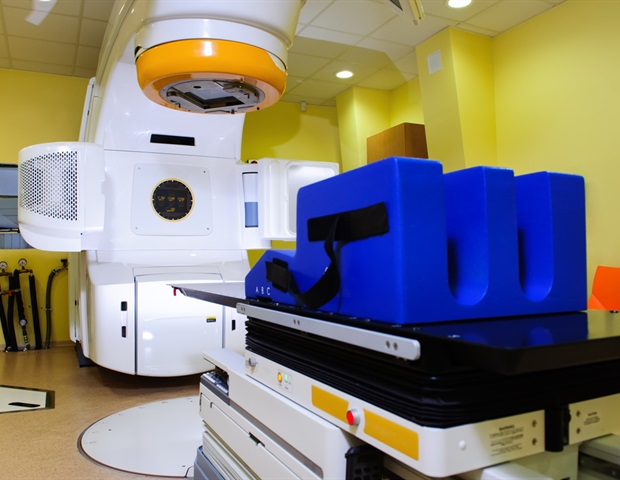Results
In a phase 2 study in a single facility, researchers at the UCLA Jonsson Comprehensive Cancer Center found that dose-equivalent preoperative radiation therapy for limb / trunk soft tissue sarcoma had similar benefits and treatment side effects within five days instead of the traditional five weeks.
Dr. Ricky R. Savjani, Resident in the Radiation Oncology Residency Program at UCLA and a researcher at UCLA Jonsson Comprehensive Cancer Center, will present updated results at ASTRO, the annual meeting of the American Society for Radiation Oncology.
Preoperative radiation therapy is an important part of treating soft tissue sarcoma. It enables the treatment team to have good local disease control and the side effects of radiation – fibrosis, lymphedema or joint stiffness – are generally manageable and well tolerated. However, the standard five-week preoperative radiation exposure is a burden that affects the patient’s quality of life. We found that a five-day course provided excellent local control and the rate of side effects and wound complications remained acceptable, with 52 patients being followed for at least two years. “
Dr. Ricky R. Savjani, UCLA
background
Results from a first cohort have already been reported. Here Savjani presents updated results with longer follow-up and additional patients from an expansion cohort.
Materials and methods
The first cohort was created between April 2016 and May 2018 and comprised 52 patients with histologically confirmed extremity or trunk soft tissue sarcoma (STS) who were planning preoperative radiation therapy (RT) with subsequent surgery. The primary endpoint of the initial cohort was grade ≥ 2 radiation morbidity rate (fibrosis, lymphedema, or joint stiffness) at two years.
An extension cohort was opened in October 2018 to compare wound complication rates between preoperative RT alone versus ChemoRT and has enrolled a further 47 patients. Patients received 30 Gy (RT alone) or 25 Gy (chemoRT) over five daily fractions on the primary tumor with standard margins.
Here we report on patients with primarily localized STS who completed preoperative RT and surgery in the initial and expansion cohort (N = 79; ChemoRT excluded). We assessed the disease outcomes (local control and distant metastases) and toxicity (grade 2 fibrosis, lymphedema, or joint stiffness) after a two-year follow-up (N = 93). Fibrosis and joint stiffness were assessed using RTOG / EORTC criteria, and lymphedema using the Stern scale. We have also updated the rate of major wound complications (defined according to established criteria) after one year of follow-up.
Conclusions and implications
Of the 52 patients with a follow-up of at least two years, the predominant histological subtypes included undifferentiated pleomorphic sarcoma, spindle cell sarcoma or sarcoma NOS (N = 24), myxofibrosarcoma (N = 8), and myxoid liposarcoma (N = 12). The median tumor size was 6.9 cm and 15 patients had tumors 10 cm. With a median follow-up of two years, the local recurrence and distant metastasis rates were 6.4% and 24.7%, respectively. The overall grade ≥ 2 radiation morbidity rate in the same group was 12.9%. Severe wound complications were observed in 22 of 91 (24.2%) evaluable patients.
Overall, these results show excellent local control rates with acceptable toxicities and wound complications.
Source:
University of California-Los Angeles Health Sciences

